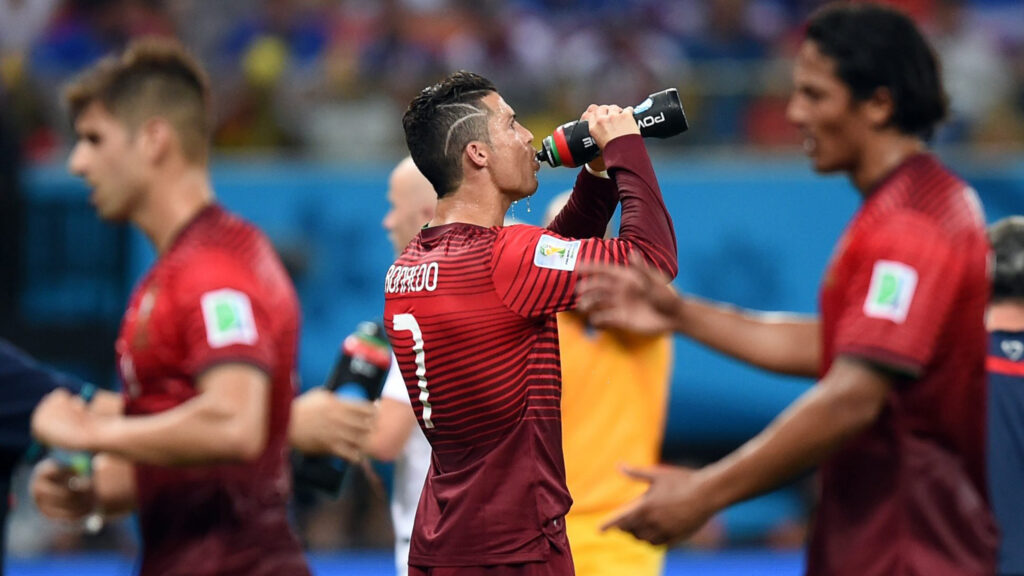In recent years, Hydration Breaks in International Soccer has seen many changes aimed at improving player safety and performance. One important change is the introduction of hydration breaks, especially during matches played in hot and humid conditions. Hydration breaks, also known as water breaks, are designed to give players a short pause to drink fluids and recover from the effects of extreme heat. This article will explore why hydration breaks are crucial in international soccer, how they are implemented, and the impact they have on players and the game.
What Are Hydration Breaks in International Soccer?
Hydration Breaks in International Soccer are short pauses during a soccer match, typically lasting about three minutes, where players are allowed to drink water and rehydrate. These breaks are introduced when the temperature and humidity reach certain levels that could be harmful to the players. They usually occur near the middle of each half of the game, around the 30th minute mark, but can be adjusted based on the weather conditions.
Why Are Hydration Breaks Important?
- Preventing Heat-Related Illnesses
Soccer players are often on the field for 90 minutes, running, sprinting, and exerting a lot of energy. In hot and humid conditions, this physical effort can lead to overheating. Hydration Breaks in International Soccer help to prevent heat-related illnesses such as heat exhaustion and heatstroke, which can be dangerous and even life-threatening. By allowing players to drink water and cool down, the risk of these conditions is significantly reduced.
- Maintaining Performance
When players become dehydrated, their performance can decline. Dehydration can lead to fatigue, reduced concentration, and impaired coordination, all of which can negatively impact the quality of play. Hydration breaks help to maintain optimal performance levels by ensuring that players stay hydrated and are able to perform at their best throughout the match.
How Are Hydration Breaks in International Soccer Implemented?
- FIFA’s Guidelines
FIFA, the international governing body of soccer, has set guidelines for when hydration breaks should be introduced. According to these guidelines, hydration breaks are mandatory when the Wet Bulb Globe Temperature (WBGT) index reaches 32 degrees Celsius (89.6 Fahrenheit). The WBGT index takes into account various factors such as temperature, humidity, wind, and cloud cover to determine the overall heat stress on players.
- Referee’s Role
The referee plays a crucial role in implementing hydration breaks. They are responsible for monitoring the weather conditions and deciding when to call for a break. The referee uses a portable device to measure the temperature and humidity and consults with officials to determine if the conditions meet the criteria for a hydration break. If necessary, the referee will stop the game and signal for the break to be taken.
- Communication and Awareness
Teams and players need to be aware of the hydration break protocol. Coaches and team staff are responsible for ensuring that players understand the importance of these breaks and make the most of them. This includes drinking enough water and using the time to cool down. Good communication between referees, players, and coaches helps to ensure that hydration breaks are effectively implemented and followed.

Benefits of Hydration Breaks
- Health and Safety
The primary benefit of hydration breaks is the improvement in player health and safety. By providing a chance for players to hydrate, the risk of heat-related illnesses is reduced. This helps to keep players safe and ensures that they can continue to perform without experiencing health issues related to extreme heat.
- Enhanced Game Quality
When players are well-hydrated, they are less likely to experience fatigue and decreased performance. Hydration breaks help to maintain high standards of play by ensuring that players are in good physical condition throughout the match. This leads to a better overall quality of the game, with more dynamic and engaging performances.
Challenges and Considerations
- Scheduling and Game Flow
One challenge of hydration breaks is their impact on the flow of the game. Stopping the match for a few minutes can disrupt the rhythm and momentum of the game. However, the benefits of player safety and performance often outweigh these disruptions. Teams and players need to adapt to these breaks and use them effectively to minimize any negative impact on the game.
- Temperature Monitoring
Accurately measuring and monitoring temperature and humidity is crucial for implementing hydration breaks. Inconsistent or inaccurate readings can lead to confusion and disagreements about when breaks should be taken. Ensuring that reliable equipment is used and that officials are well-trained in its use helps to address this challenge.
Conclusion
Hydration Breaks in International Soccer are an essential part of modern international soccer, especially in hot and humid conditions. They help to protect players’ health, maintain their performance, and enhance the overall quality of the game. By understanding the importance of these breaks and how they are implemented, teams, players, and officials can work together to ensure that soccer matches are safe and enjoyable for everyone involved. As the game continues to evolve, the emphasis on player welfare and the implementation of effective measures like hydration breaks will play a crucial role in shaping the future of soccer.
FAQs
Q: What are Hydration Breaks in International Soccer?
A: Hydration Breaks in International Soccer are short pauses during a soccer match where players are allowed to drink water and rehydrate, usually around the 30th minute of each half. They are implemented in hot and humid conditions to prevent heat-related illnesses and maintain player performance.
Q: When are Hydration Breaks in International Soccer required during a match?
A: Hydration Breaks in International Soccer are required when the Wet Bulb Globe Temperature (WBGT) index reaches 32 degrees Celsius (89.6 Fahrenheit) or higher, which measures heat stress based on factors like temperature, humidity, and wind.
Q: Who decides when a Hydration Breaks in International Soccer is needed?
A: The referee decides when a Hydration Breaks in International Soccer is needed by monitoring the weather conditions and using equipment to measure the temperature and humidity. They stop the game and signal for the break if the conditions meet the criteria.
Q: How long does a Hydration Breaks in International Soccer last?
A: A Hydration Breaks in International Soccer typically lasts about three minutes, giving players enough time to drink water and cool down before the game resumes.
Q: Do Hydration Breaks in International Soccer affect the flow of the game?
A: Yes, Hydration Breaks in International Soccer can disrupt the flow of the game by stopping play for a few minutes. However, the benefits for player safety and performance are considered to outweigh the disruption.

